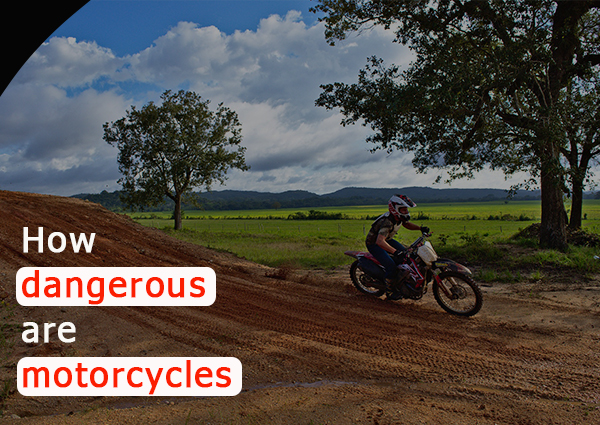How Dangerous are Motorcycles
The following article will discuss an important topic that is “How dangerous are motorcycles” and will talk about it in more details within the article. We all have our own and different perception of danger and risk. Riding a bike is one of the greatest pleasures you can experience in life, nevertheless only a minority of individuals in the auto-obsessed Western world actually ride. This can be explained partially by the perceived danger of riding a bike. whether the severity of that danger is real or just a misconception is debatable, however, let’s unpack some facts and figures about the risk factors involved with riding, and review a number of the ways in which we can avoid becoming another National Highway Traffic Safety Administration statistic.
Arguably, motorcycling needs additional focus and brain function than driving a car. The act itself is both more physically and mentally exhausting than driving something with four wheels, with the exception of F1 cars and the like. There’s no way to remove risk from the equation entirely, therefore there will always be an element of danger involved with riding. Like cars or guns, once used irresponsibly they can be unbelievably dangerous. And even in the hands of a properly trained and mature user, generally fatal accidents still, occur. Proper training and responsible use create a huge difference.
But How Dangerous are Motorcycles
- It is, of course, not “news” that riding a bike is dangerous. The latest statistics (as of 2015) published by the National Highway Traffic Safety Administration (NHTSA) help us understand why. It’s actually many time more dangerous than riding in a car. NHTSA says that motorbike riders were 29 times more likely to die in a crash compared to car occupants.
- Wearing a helmet can save your life. 40% of motorcyclists killed in crashes were not wearing a helmet. Unbelievably, only 19 states require all motorcyclists to wear helmets, while three states-Illinois, Iowa and New Hampshire-have no helmet use laws at all.
- Older riders are in greater danger. 54% of motorcyclists killed in crashes were age 40 or older, and older riders sustain more serious injuries from crashes. This is likely attributed in older riders due to declining vision and latency (reaction time), and to their increased fragility, as well as to the larger motorbikes they prefer to ride-which are susceptible to rolling over more often.
- Anti-lock brakes (ABS) are a great safety feature. Motorbikes with ABS are 37% less likely to be involved in a crash that is fatal.
- Don’t drink and ride, especially at night: 27% of motorcyclists killed in a crash had blood alcohol concentrations (BAC) above 0.08—nearly three-fourths of them being 35 to 49 years old. Nighttime motorcycle fatalities are three times more likely than day time fatalities to involve high BAC levels.
- Don’t speed. 33% of motorcycle crash fatalities involved speeding.
- Don’t let anyone ride without a license: an unbelievable 27% of these motorcyclists killed in a crash didn’t have a legitimate license.
- Supersport motorcycles are extremely dangerous: The riders of “supersport” motorbikes-that are marketed to young riders and are able to reach street speeds that are apparently up to 190 mph-are four times more likely to die in a crash than the riders of other kinds of motorbikes.
So, not too much surprise, driving a motorcycle is dangerous for the same reasons that driving a car is dangerous: excessively fast and/or unprotected and/or impaired driving, especially by someone whose reflexes are not up to the demands of driving, is very dangerous. The difference is the margin for error: the motorcyclist has far less protection surrounding him/her and therefore has much less chance to survive a crash, than the driver of a car.

